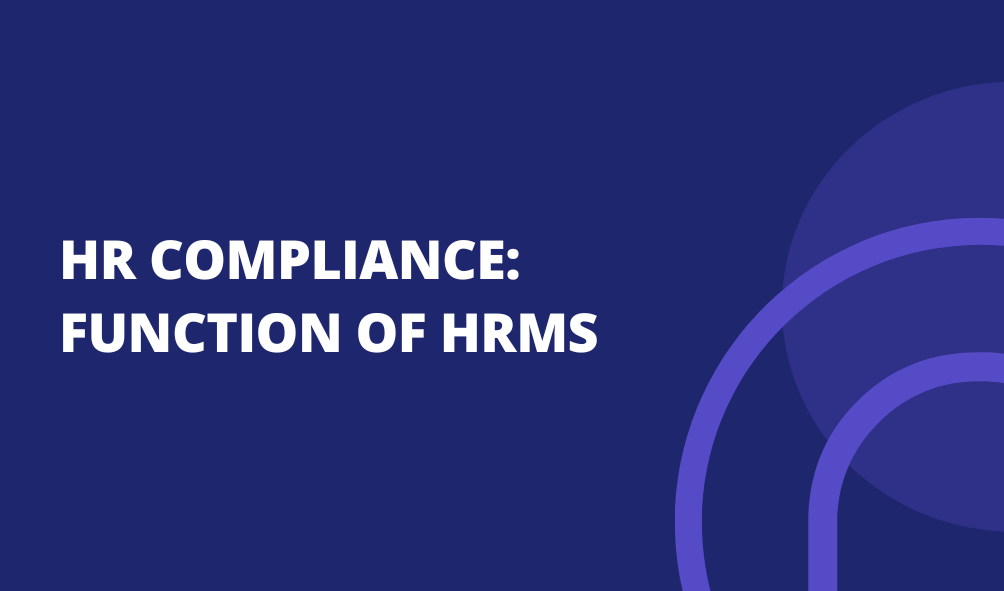HR Analytics And HR Reporting: Important Functions Of HRMS
HR Analytics and HR Reporting: Important Functions of HRMS
HR Analytics & Reporting is a powerful tool that enables organizations to leverage data for smarter human resource management. By systematically analyzing workforce data, businesses can optimize HR processes, improve employee performance, and ensure compliance with policies and regulations. The use of HR analytics and HR reporting in HRMS changes decision-making.It helps HR professionals rely on real-time insights instead of just intuition.
What is HR Analytics?
HR analytics is the careful study of human resource data. It helps improve workforce planning, boost employee engagement, and enhance business performance.
By collecting and evaluating data on hiring, performance, turnover, and training, HR professionals can identify trends, predict challenges, and implement proactive solutions. HR data analytics helps companies understand what affects employee productivity and satisfaction.
Importance of HR Reporting
HR reporting means creating and analyzing HR data. This helps track workforce trends and measure key performance indicators (KPIs).
HR teams use HR reporting software to create detailed reports on different HR functions. These functions include recruitment, retention, compensation, and compliance.
These reports are important for making decisions. They help make sure that HR strategies match the goals of the organization and follow the rules.
Key Features of HR Analytics & Reporting
HR analytics and reporting help track employee performance and workforce trends.
It includes data on attendance, payroll, and productivity for better decisions. With accurate reports, businesses can improve HR strategies. Learn more about the Human Resource Management Process.
1. HR Metrics and Analytics
Organizations use HR metrics and analytics to assess key performance indicators such as employee turnover, hiring efficiency, and training impact. These insights help HR teams refine policies and optimize workforce planning.
2. Workforce Analytics
Workforce analytics helps HR professionals analyze workforce productivity, detect skills gaps, and predict future workforce needs. By looking at past data, businesses can create focused workforce plans. These plans help improve employee satisfaction and keep workers longer.
3. HR Analytics Software & Tools
Businesses rely on HR analytics software and HR analytics tools to automate data collection and reporting. These tools provide real-time analytics. They help HR managers spot workforce trends, measure engagement levels, and make decisions based on data.
4. Employee Performance Analytics
With employee performance analytics, organizations can monitor individual and team performance, recognize top performers, and develop targeted training programs. This data-driven method makes sure that employee growth matches business goals.
5. HR Dashboard Reporting
HR dashboard reporting shows HR data visually. This helps HR professionals see trends and make quick, informed decisions. Dashboards display essential HR metrics, such as desertion rates, workforce demographics, and hiring success rates.
6. People Analytics in HR
People analytics in HR helps HR teams understand workforce behavior, improve employee engagement, and refine HR strategies. By looking at employee feedback, job satisfaction, and workplace culture, businesses can improve employee experience and keep their staff.
Benefits of HR Analytics & Reporting
- Data-Driven Decision-Making: Provides HR teams with actionable insights for strategic planning.
- Improved Employee Engagement: Helps track and improve workforce satisfaction.
- Better Workforce Planning: Predicts future workforce needs and optimizes talent management.
- Increased Efficiency: Automates HR processes, reducing manual work and minimizing errors.
- Strategic Talent Management: Identifies top talent and optimizes hiring and retention strategies.
Conclusion
Combining HR analytics and HR reporting in an HRMS gives organizations the tools to improve HR functions. This helps boost workforce productivity and supports data-driven decisions. By using HR analytics software, companies can improve talent management. They can also ensure compliance and create HR strategies that lead to long-term success.







